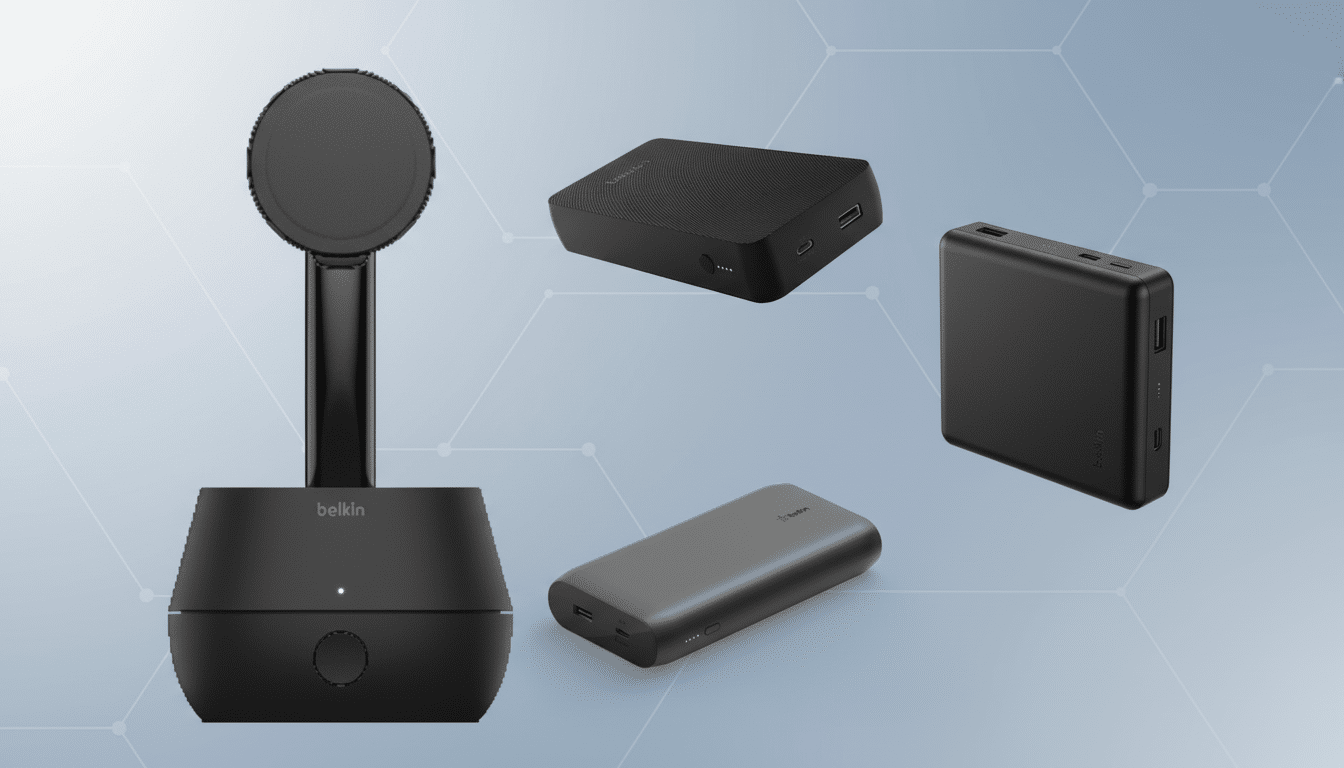Belkin is recalling certain portable chargers and a power source/charging stand after discovering a manufacturing flaw that can lead to the lithium-ion battery cells overheating, creating potential burn or fire hazards. The action covers about 86,000 units in the United States and Canada, regulators said, and involves reports of minor injuries as well as one confirmed fire.
Which Belkin products are affected by the current recall
The recall includes two models of the BoostCharge 20K USB-C PD power banks — known as BPB002 and PB0003 — as well as the Auto-Tracking Stand Pro for iPhone, model MMA008. Belkin and safety regulators say a component in these products’ batteries can overheat under certain conditions, posing risks of burns or fire.
- Which Belkin products are affected by the current recall
- Incidents and reported damage linked to the recall
- How to check your device and claim recall remedies
- Why lithium-ion batteries can fail and overheat dangerously
- Industry context and previous recalls in this category
- Safety tips for consumers using high-capacity power banks

Approximately 83,500 units were sold in the U.S., while another 2,385 units were sold in Canada at major electronics retailers, carrier stores, and online. The U.S. Consumer Product Safety Commission and Health Canada are urging consumers to immediately discontinue the use of the affected products.
Incidents and reported damage linked to the recall
Belkin and regulators have collected 15 reports of overheating associated with the affected models in a global tally of incidents. These consist of two minor burn injuries and a single U.S. fire, with known property damage estimated at approximately $37,765. Although the failure rate may seem low relative to the total number of units sold, the severity of consequences prompted the recall.
How to check your device and claim recall remedies
Owners can verify if their model is affected by checking the label on the underside for the model number. If your unit is one of BPB002, PB0003, or MMA008, stop using it and initiate the return process through Belkin’s support team.
Belkin is providing a full refund to consumers with proof of purchase. Those without receipts are entitled to a refund at the product’s average selling price or a return for store credit worth 20 percent more. The company and regulators stress safe disposal: Do not dispose of the recalled power banks in household trash or curbside recycling. Instead, take them to a certified lithium-ion battery collection site or hazardous waste facility to reduce the risk of fires in the waste stream.

Why lithium-ion batteries can fail and overheat dangerously
Lithium-ion packs contain a lot of energy in a dense space. So when a cell is defective from manufacturing, damaged in some way, or has a failure in its protection circuitry, it can be induced into thermal runaway — an uncontrolled rapid temperature rise that may lead to the cell venting or, worse, fire. Common triggers include internal shorts, caused either by separator malfunctions, contaminants from the cell manufacturing process, or low-quality battery management systems, as well as mechanical strain.
Even well-established brands face risk, as many of their materials are drawn from complex supply chains. That’s why recalls often focus on a particular lot, component supplier, or design revision instead of an entire product category. The CPSC has made portable power products a priority in recent years, part of its larger effort to focus on battery safety across consumer electronics and micromobility.
Industry context and previous recalls in this category
This is not Belkin’s first battery recall over safety concerns. Earlier this year, the company had to recall a wireless charger and power bank combo for Apple Watch over similar fire-risk fears. It’s not entirely a one-off for the industry either; Anker recalled over 1 million of its 10,000mAh power banks and eventually expanded remedies to further models. Australia’s competition and consumer regulator has listed recalls for more than 17 models of power banks across various brands over the last few years, which suggests such problems are widespread across the Atlantic.
Safety tips for consumers using high-capacity power banks
If you’ve got a high-capacity power bank, think of it as the serious electronic device it is.
- Do not charge on soft surfaces or in direct sun.
- Keep it away from bedding and anything flammable.
- Do not use swollen or damaged units.
- Only charge with reputable cables and chargers.
- If a device feels warmer than normal, starts to smell, or changes color, unplug it and place it on a nonflammable surface until cool.
- For disposal, take devices to certified battery drop-off points rather than placing them in household bins.
Belkin’s recall is a reminder of a well-worn but crucial fact: brand power isn’t the same as being on guard. Fast responses from manufacturers, clear solutions, and knowledgeable consumers are the best defenses as portable power increasingly crams more energy into smaller devices.

